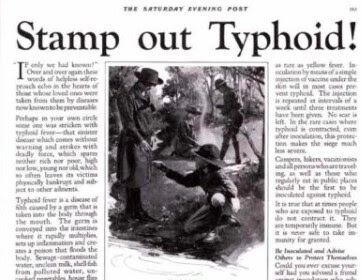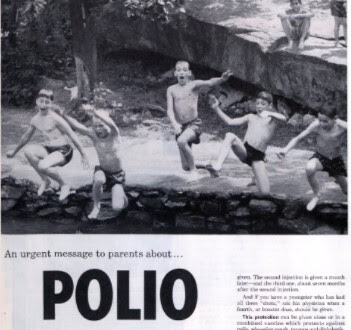08 Jan Family genealogist- January 8, 2022

GEORGE WASHINGTON AND OUR FIRST MASS INOCULATION
George Washington’s military genius is undisputed. Yet American independence must be partially attributed to a strategy for which history has given the infamous general little credit: his controversial medical actions. Traditionally, the Battle of Saratoga is credited with tipping the revolutionary scales. Yet the health of the Continental regulars involved in the battle was a product of the ambitious initiative Washington began earlier that year at Morristown, close on the heels of the victorious Battle of Princeton. Among the Continental regulars in the American Revolution, 90 percent of deaths were caused by disease, and Variola, the smallpox virus, was the most vicious of them all.
On the 6th of January 1777, George Washington wrote to Dr. William Shippen Jr., ordering him to inoculate all of the forces that came through Philadelphia. He explained that: “Necessity not only authorizes but seems to require the measure, for should the disorder infect the Army . . . we should have more to dread from it, than from the Sword of the Enemy.” The urgency was real. Troops were scarce, and encampments had turned into nomadic hospitals of festering disease, deterring further recruitment. Moreover, both Benedict Arnold and Benjamin Franklin, after surveying the havoc wreaked by Variola in the Canadian campaign, expressed fears that the virus would be the army’s ultimate downfall.
At the time, the practice of infecting the individual with a less-deadly form of the disease was widespread throughout Europe. Most British troops were immune to Variola, giving them an enormous advantage against the vulnerable colonists. Conversely, the history of inoculation in America (beginning with the efforts of the Reverend Cotton Mather in 1720) was pocked by the fear of the contamination potential of the process. Such fears led the Continental Congress to issue a proclamation in 1776 prohibiting Surgeons of the Army from inoculating.
Washington suspected the only available recourse was inoculation, yet contagion risks aside, he knew that a mass inoculation put the entire army in a precarious position should the British hear of his plans. Moreover, Historians estimate that less than a quarter of the Continental Army had ever had the virus; inoculating the remaining three quarters and every recruit must have seemed daunting. Yet the high prevalence of the disease among the army regulars was a significant deterrent to desperately needed recruits, and a dramatic reform was needed to allay their fears.
Weighing the risks, on February 5th of 1777, Washington finally committed to the unpopular policy of mass inoculation by writing to inform Congress of his plan. Throughout February, Washington, with no precedent for the operation he was about to undertake, covertly communicated to his commanding officer’s orders to oversee mass inoculations of their troops in the model of Morristown and Philadelphia (Dr. Shippen’s Hospital). At least eleven hospitals had been constructed by the year’s end.
Variola raged throughout the war, devastating the Native American population and slaves who had chosen to fight for the British in exchange for freedom. Yet the isolated infections that sprung up among Continental regulars during the southern campaign failed to incapacitate a single regiment. With few surgeons, fewer medical supplies, and no experience, Washington conducted the first mass inoculation of an army at the height of a war that immeasurably transformed the international system. Defeating the British was impressive, but simultaneously taking on Variola was a risky stroke of genius.
https://www.loc.gov/rr/scitech/GW&smallpoxinoculation.html
 THE BEST CHRISTMAS PRESENT EVER!
THE BEST CHRISTMAS PRESENT EVER!
The good news is you are not George Washington and you do not have to make decisions regarding a new nation’s fate!
I hope you enjoyed the collection of vintage ads where the government worked to encourage inoculation. There were ads that we have shared in the past from other groups sharing their perceived pitfalls with inoculation.
Whatever choices you make in regards to vaccination. I hope you and your family are in good spirits and health as we find ourselves coming out of the 2021 holiday season and starting up the new year.
By the time you read this, you will have already enjoyed too many big plates of food, given thanks, and hopefully spent time with your loved ones, family, and friends. AND you survived Black Friday, Small Business Saturday, Cyber Monday, New Year’s Eve, and Return Sunday!
After so many years of trying to purchase thoughtful and creative presents for your loved ones, do you find yourself feeling like “you didn’t quite hit the mark” when it came to the uniqueness and personalization of your gifts? Do you find yourself wishing you could find a better gift?
It’s sort of interesting that, as our income grows and our available time shrinks, we often try to increase the price tag to cover that wishful gap between what we’re able to provide and do settle on.
The greatest joy I have felt is when I provided my family and others the pleasure of opening a book containing their story.
There is no more unique and personalized gift than capturing one’s family legacy in the form of pictures, stories, and historical documents in an easy-to-read, enjoyable fashion.
The bookmark will be well-used as the family repeatedly picks up the book and looks through it, getting a sense of their origin and identity.
Take the easy steps now on January 8, 2022; and instead of sitting there feeling a bit disappointed on Return Day 2023, you can click below, reach out to me and get into the queue with Dancestors and we can create your families’ story over the next year. So have your shopping done early with a timeless gift!






